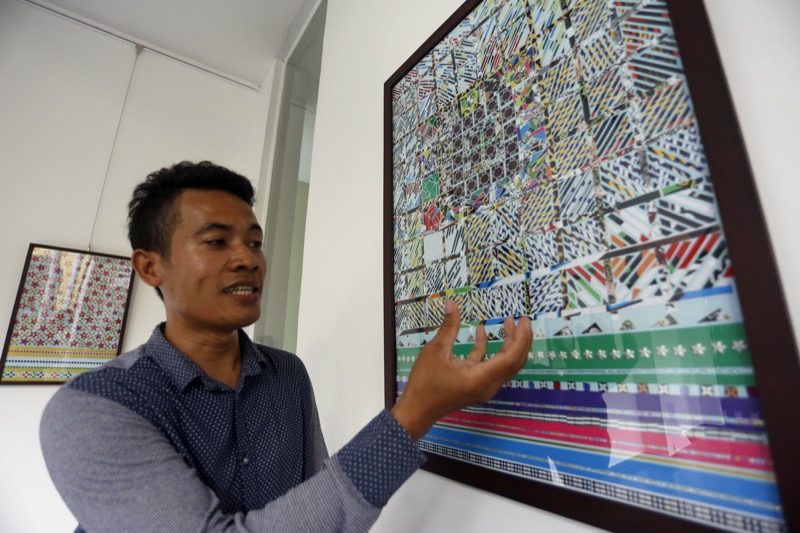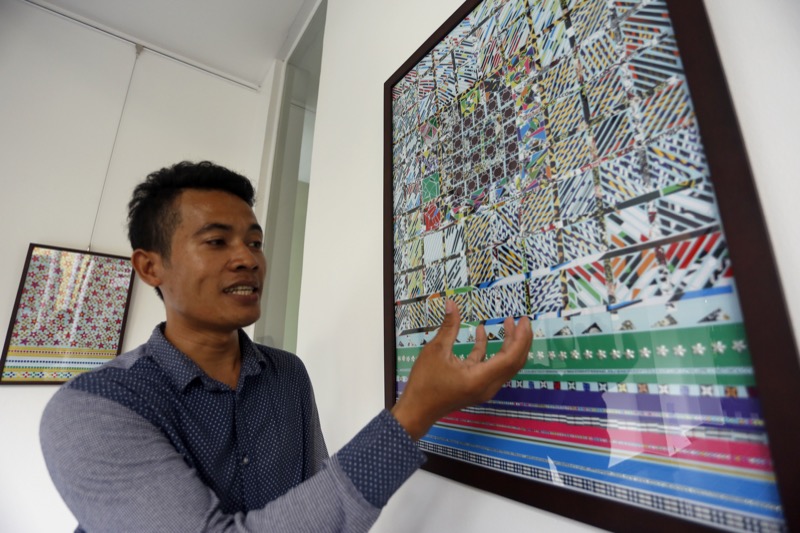“Sampot civilise” (Civilized sampot), a new exhibition in Phnom Penh, celebrates one of Cambodia’s oldest garments, at once both beautiful and practical, and kept alive through the country’s good times and bad.
Artist Chan Dany has fashioned sampot fabric into art, using everything from multicolor embroidery beads to stickers, to recreate time-honored motifs in relief on canvas, paper, plastic—even crochet fabric backing. The intricate pieces nudge the past into the 21st century.

“I collected leftover pieces of fabric from garment factories, tailor shops, pieces of existing patterns that I reinvented in my artworks,” Mr. Dany, 32, said.
Worn by men and women throughout Cambodia’s history, a sampot consists of a piece of fabric wrapped around one’s hips. Poorer Cambodians tend to use modest, inexpensive material, while the wealthy favor luxurious handwoven silk. These days, middle-class young men hardly wear them at all.
“Although women mainly wear it, men also wear it at home and also for traditional events,” Mr. Dany said on Monday.
The 15 artworks displayed in the exhibition took Mr. Dany nearly three years to create.
For the piece “Daytime Stars,” he covered a pale green panel with small golden-brown squares and a band of burned gold and blue flowers made of plastic beads, then added gold and sea-green bands and a zigzag motif of tiny magenta beads.
Featuring patterns popular during the 1960s, the dark colors that defined the Khmer Rouge era and styles in vogue today, he aims to demonstrate how fabric, old or new, can be put to good use, he said. “These artworks are also meant to make [people] understand that some people are so poor that they keep wearing their sampot even when it’s torn.”
This is a reality Mr. Dany knows well. Born into poverty in Prey Veng province, he spent his childhood working on a farm. After moving to Phnom Penh in 1999, he could not afford to attend public school, but soon learned of the Reyum Institute of Arts and Culture. He graduated from the school after nearly five years, and has since exhibited in several countries in addition to Cambodia.
Where: The Plantation hotel, Street 184, Phnom Penh
When: Until February 12




